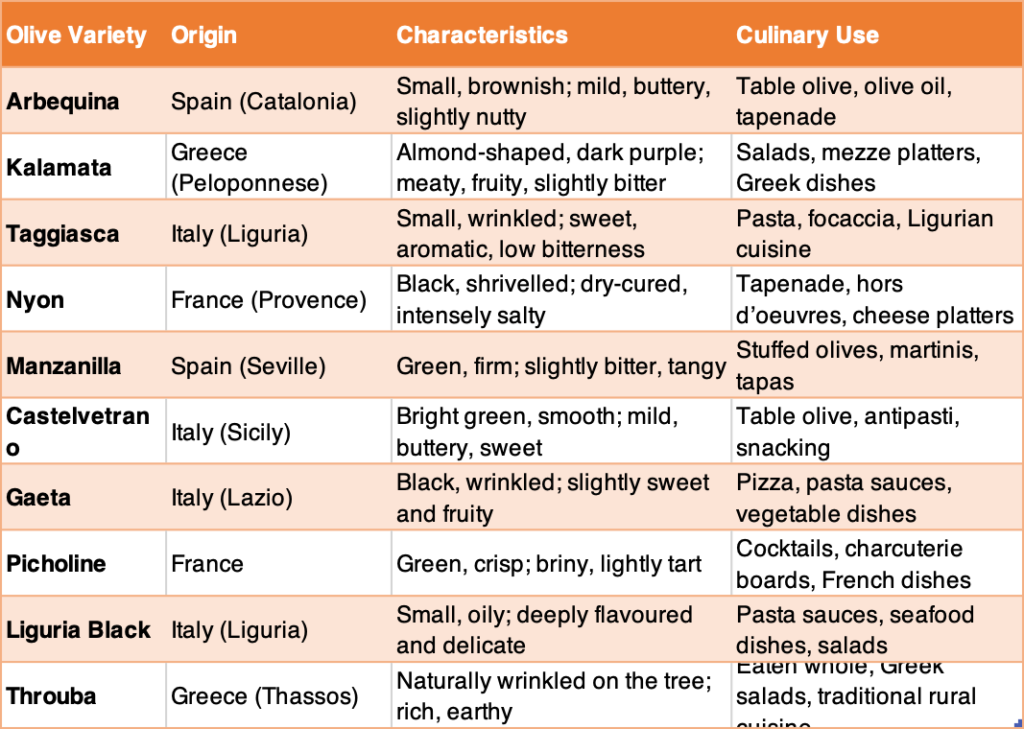There’s something magical about olives—the way their rich, briny depth can transform a simple dish into something extraordinary. I still remember my first taste of a truly great olive: a plump, buttery Nyon, slightly wrinkled from dry-curing, its flavor both earthy and bright. It was nothing like the bland, rubbery supermarket olives I’d known before. That moment sent me down a rabbit hole of olive obsession—how they’re grown, cured, and why they taste so different from one jar to the next.
Olives are stubborn little fruits. Fresh off the tree, they’re unbearably bitter, thanks to a compound called oleuropein. (Trust me, I once made the mistake of biting into one straight from the branch—never again.) To become edible, they need patience. Some are bathed in lye for quick curing, but the best ones take the slow road—fermenting in saltwater brine for months, developing deep, complex flavors. Others are dry-cured in sea salt, shrinking into chewy, intensely savory morsels.

Then there’s the sheer variety. A buttery Castelvetrano, bright and almost sweet, is nothing like a Kalamata, with its winey richness. Liguria’s Taggiasca olives are tiny but pack an umami punch, perfect crushed into a rustic pasta. And in Spain, Andalusian arbequina olives lend their delicate fruitiness to gazpacho, while Catalan cuisine elevates them to art in dishes like pa amb tomàquet, where their saltiness dances with ripe tomato on crusty bread. And don’t get me started on the ones stuffed with garlic or preserved under oil—each bite feels like a tiny revelation.
In the kitchen, olives are my secret weapon. A handful can rescue a dull salad, add depth to a stew, or turn a simple focaccia into something unforgettable. I love them in a quick puttanesca, their saltiness balancing the tomatoes, or blended into tapenade for a spread that disappears within minutes. And let’s not forget the oil—golden, peppery, and irreplaceable.
But olives aren’t just food. They’re a connection to centuries of tradition—to sun-baked groves where families still harvest by hand, to tables shared over bowls of olives, crusty bread, and good wine. Every bite carries that history. So next time you pop one into your mouth, take a second to savor it. The best ones always have a story to tell.






